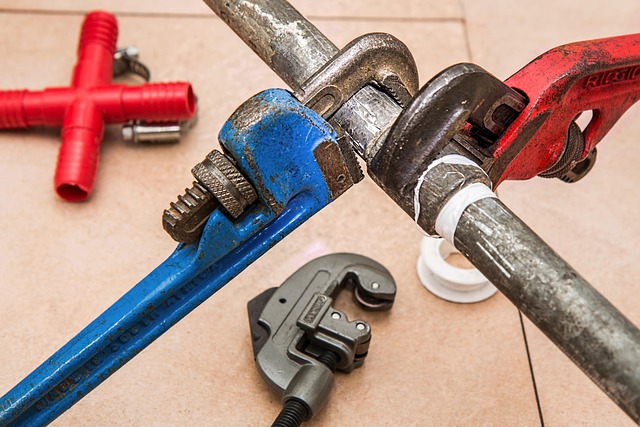When to schedule a professional visit versus DIY repairs
Deciding whether to attempt a home heating repair yourself or call a professional can affect safety, system longevity, and heating efficiency. This article outlines clear indicators for scheduling a professional visit versus doing DIY maintenance, focusing on furnaces, boilers, thermostats, filters, airflow, ducts, combustion, ventilation, inspections, tuneups, safety, and overall efficiency to help homeowners make informed choices.

Deciding whether to handle a heating issue yourself or bring in a technician depends on several factors including safety risks, system complexity, and the potential for long-term damage. Simple tasks like replacing a dirty filter or adjusting thermostat settings are often safe for homeowners. However, anything that involves gas lines, combustion, electrical work, sealed systems, or major airflow and ventilation adjustments usually requires a trained professional. Balancing routine DIY upkeep with scheduled inspections and tuneups helps preserve heating performance and reduces the chance of emergency breakdowns.
When to check the filter and airflow?
A clogged filter is one of the easiest problems to diagnose and fix: reduced airflow, higher energy use, and uneven heating often point to a dirty filter. Homeowners should inspect and replace disposable filters every 1–3 months, depending on usage, pets, and air quality. While changing a filter is typically a DIY task, persistent airflow restrictions after replacing the filter—such as strange noises, weak vents, or significant heat loss—may indicate duct obstructions, blower issues, or improper sizing that warrant a professional inspection to restore safe, efficient airflow.
Is thermostat troubleshooting DIY?
Basic thermostat troubleshooting is usually safe for most homeowners: check batteries, verify programming, and confirm the thermostat is set to the correct mode. Replacing a simple battery-powered thermostat or adjusting settings can improve efficiency. However, if the thermostat is integrated with smart home systems, requires low-voltage wiring work, or if the heating system won’t respond despite proper thermostat operation, call a technician. Incorrect wiring or improper configuration can lead to short circuits or miscommunication with the furnace or boiler that a pro should address.
When to inspect ducts and ventilation?
If certain rooms are consistently colder or there are strange odors or dust levels, the ducts and ventilation system may need attention. Visual inspections for disconnected duct sections, visible damage, or large dust buildups can be done by homeowners, but thorough duct cleaning, sealing, or re-routing typically requires professionals with appropriate tools and testing equipment. Proper ventilation is essential for combustion systems; blocked vents can cause back-drafting or dangerous pollutant buildup. For anything involving structural changes or combustion venting, schedule a professional who can test airflow and ensure compliance with safety standards.
When combustion checks require a pro?
Combustion systems like gas furnaces and boilers pose potential safety hazards if not maintained correctly. Signs such as yellow instead of blue burner flames, soot, pilot light instability, or the smell of gas are clear indicators to stop DIY attempts and call a licensed professional immediately. Technicians can test combustion efficiency, check flue integrity, measure carbon monoxide levels, and inspect burners and seals. Because combustion issues directly affect safety and air quality, they should never be deferred or handled without proper certification and testing equipment.
Should you tuneup your furnace or boiler?
Regular tuneups increase efficiency and reduce failure risk. During a professional tuneup, a technician will clean burners, inspect heat exchangers, test controls and safety switches, measure combustion, and verify airflow and ventilation. Homeowners can complement professional tuneups with routine checks—ensuring clear vents, changing filters, and maintaining adequate clearance around the unit. If your furnace or boiler shows persistent performance drops, frequent cycling, or unexplained noises, schedule a tuneup and inspection: small fixes discovered during preventive service often avoid costly repairs later.
What happens during a professional inspection?
A professional inspection covers safety and efficiency checks that go beyond typical DIY maintenance. Technicians examine combustion components, test for carbon monoxide, verify ventilation and flue integrity, inspect ducts and airflow, and assess electrical and control systems. They also check for signs of corrosion, leaks, or worn components and can recommend parts replacement if needed. This comprehensive review identifies emerging issues early and documents system condition for future maintenance planning. If any inspection reveals safety concerns, service professionals will prioritize fixes to prevent hazardous operation.
Conclusion Routine DIY maintenance—like replacing filters, checking thermostat settings, and keeping vents clear—helps maintain daily performance and efficiency. Professional visits are warranted for safety-related concerns, combustion checks, persistent airflow or ventilation problems, complex electrical or gas work, and regular tuneups or inspections. Combining homeowner vigilance with scheduled professional service preserves system efficiency, extends equipment life, and reduces the risk of unsafe conditions.





